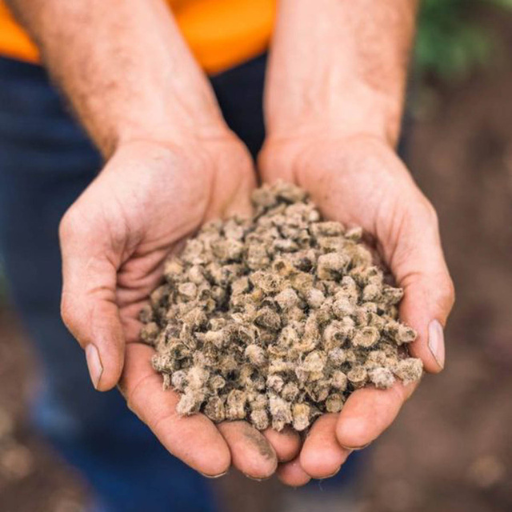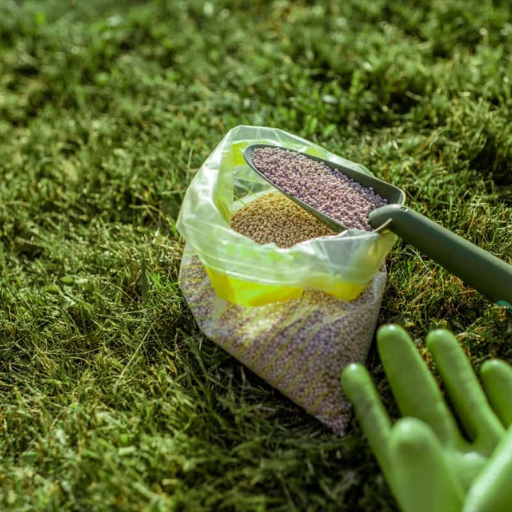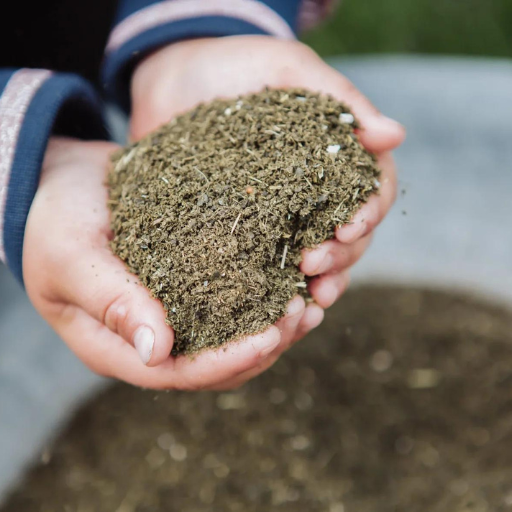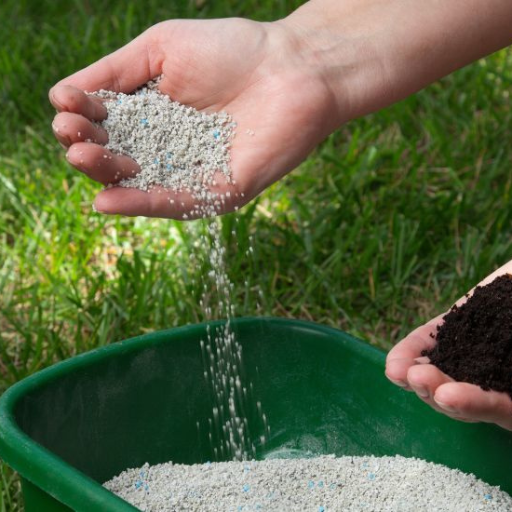Creating a lush, green lawn or a flourishing garden can be a rewarding endeavor, but selecting the right fertilizer is crucial to your success. This blog explores the benefits of using slow release organic fertilizers, a natural and sustainable choice that supports plant health and soil vitality. We’ll delve into how these fertilizers work, their advantages over synthetic options, and practical tips for integrating them into your gardening routine. Whether you’re a seasoned gardener or just starting out, this guide will provide valuable insights to help you achieve vibrant, hearty plants with a truly organic approach.
What is Organic Slow Release Fertilizer and How Does It Work?

Comprehending Slow Release Fertilizer Technology
Slow release fertilizers are those that provide nutrients gradually to the soil over a long period. This ensures that plants get consistent supply of vital nutrients which in turn promote their growth and health. These are usually organic slow release fertilizers which rely on natural materials like compost, manure or plant-based products to achieve this purpose. The breakdown process is a microbe activity that makes these substance s degrades at a very slow pace leading to constant availability and balance nutrition following plants’ normal growth patterns thus reducing nutrient leaching, minimizing chances superimpose fertilizer lawns and conserving the environment.
The Advantages of Using Organic Fertilizer in Your Garden
There are several benefits associated with using organic fertilizers for your garden that instill good health in your plants as well as the environment. Firstly, organic fertilizers enhance soil structure thereby improving its ability to hold water and nutrients making it conducive for root’s implantation Secondly, they deliver required nutrient balance over time reducing the risk of nutrient pollution through leaching as compared to synthetic alternatives. Also, they stimulate useful organisms and biodiversity such as fungi and bacteria thereby suppressing pests and diseases among crop species. Lastly, since they come from nature itself, organic fertilizers have remained eco-friendlier while also being renewable hence contributing towards sustainable gardening practices aimed at maintaining healthy soils for generations without much reliance on chemicals.
How Organic Fertilizers Improve Soil Health
Soil fertility can be increased by improvements in its structure through addition of more organic matter contents increasing microbial activities and raising its nutrient content levels through organic fertilization methods unlike synthetic counterparts where only chemical elements are used. In addition to this, application of organic matter to soil creates space between soil crumbs encouraging water percolation further enhancing water retention capacities of the soils facilitating better conditions for penetrations of crop roots into them .Moreover ,organic fertilizers support beneficial ecosystem involving bacteria fungi etc involved in decomposition of organic substrates for plant nutrients This will also go a long way in suppressing soil borne diseases and pests. Moreover, slow release properties of organic fertilizers ensure a more consistent nutrient supply thereby reducing the risks of its leaching to the environment and enhancing the fertility of soil’s over time.
How to Choose the Best Slow Release Fertilizer for Your Plants
Read and understand the fertilizers labels
When choosing slow-release fertilizer, reading the label is critical. In general, fertilizers are labeled with three numbers—called an N-P-K ratio—that refer to the percentage of nitrogen (N), phosphorus (P), and potassium (K) in the product. For example, a 10-5-10 fertilizer contains 10% nitrogen, 5% phosphorus, and 10% potassium.
In addition to that, there other information on labels regarding different nutrients either quick release or slow release. Check for terms such as “controlled-release,” “time-release” or “slow release” to ensure steady supply of nutrients over time. The source of nutrient can also be identified as organic or synthetic which affects both environmental impact and specific benefits to your plants.
Moreover, many labels give application instructions for different plant types at varying stages of growth indicating correct amount as well as frequency of use. Adhering to these directions will help maximize the fertilizer’s benefits while minimizing chances of nutrient leaching and plant damage. Finally, certification logos or statements about meeting standards can give additional assurance of the product’s quality and safety. Understanding all these details helps you choose the right slow-release fertilizers that meet your gardening needs.
Major Ingredients in Organic Slow Release Fertilizers
The organic slow-release fertilizers have ingredients which decompose slowly releasing plant nourishing substances gradually over time. They may contain among others:
- Compost: It enhances soil structure and microbe activity while being rich in several nutrients.
- Manure: Processed animal waste manure is very rich in nitrogen substance along with other essential components promoting plant development enhancing soil fertility.
- Bone Meal: This kind has high concentration of phosphorus supporting root growth and flowering processes.
- Blood Meal: A good source of nitrogen which stimulate leafy green growth ad correction of possible nitrogen deficiency.
- Fish Emulsion: It supplies balanced amounts of Nitrogen (N), Phosphorous (P) and Potassium (K) from processed fish.
- Alfalfa Meal: It promotes microbial activity and provides nitrogen for the soil coming from plant sources.
- Kelp Meal: It is highly packed with trace minerals, vitamins as well as hormones necessary for general plant healthiness and resistance to disease.
These fertilizers break down at various rates so that nutrients are supplied continuously. With a mixture of these elements, organic slow-release fertilizers provide sustainable ways of nourishing plants effectively.
Top Products for Various Garden Applications
There are unique requirements for plants as well as soils in identifying the best organic slow release fertilizers for your garden. Herein are some recommended products based on inputs obtained from leading gardening websites:
LOYAL Tomato, Vegetable & Herb Fertilizer
- Key Features: This fertilizer is made with probiotics, seven champion strains of beneficial soil microbes, and eight select strains of ecto and endo mycorrhizae. It’s OMRI listed so it conforms to the organic standards.
- Best Use: Ideal for a wide variety of vegetables, tomatoes, and herbs, providing all the essential nutrients needed for healthy growth.
Espoma Garden-Tone
- Key Features: Formulated using 100% natural and organic ingredients which contain balanced blend of nutrients that has been enhanced with Bio-tone; a beneficial microbial blend.
- Best Use: Good to use while growing vegetables or herbs the organically way by enhancing development while improving soil health.
Jobe’s All Purpose Organic Granular Fertilizer
- Best Use: This product is OMRI certified and it contains an exclusive blend of useful microbes known as Jobe’s Biozome. It is made to enhance the quality of soil and plant health.
- Best Use: Its wide range of applications such as vegetables, shrubs, trees and flowers makes it suitable for all categories of plants in the garden.
By using any of these highly recommended organic fertilizers, you can make sure that your garden thrives naturally through prolonged nutrient release and better soil quality.
How to Use Slow Release Fertilizer for Optimal Plant Growth

Tips for Applying Slow-Release Fertilizers
To ensure optimal plant growth when using slow-release fertilizers, consider the following application tips:
- Read the Instructions: Start by carefully reading the manufacturer’s instructions provided on the fertilizer packaging. It is important to know the recommended rates and methods of application.
- Soil Preparation: Prior to applying fertilizers, get rid of any weeds and debris from your soil. Loose it for better nutrient penetration and distribution.
- Proper Placement: Spread the plant food evenly around the stem base while keeping it away from it by several inches in order to avoid burning. When dealing with row crops, sprinkle it as a narrow band down each furrow.
- Watering: After spreading this type of fertilizer, water your plants deeply so that the nutrients are gradually released into them over time through its slow release mechanism.
- Timing: Application of slow release fertilizers should be done in early grow stage or during planting session. This will ensure that nutrients are available when needed most by plants.
- Reapplication: You can reapply such kind of fertilizer depending on product and plants’ nutritional needs as specified on its package. In most cases, this could be at intervals of a few months in duration of growing season.
These pointers could help you maximize benefits accruing from use of slow release fertilizers and consequently lead to healthier growth patterns in plants
Common Mistakes to Avoid
- Over-application: One mistake commonly made is putting too much fertilizer into soil. The presence excessive amounts can cause burned leaves and smaller size among other effects like death in some cases thus sticking within recommended levels is advised.
- Incorrect Timing: Wrong timing may reduce efficiency associated with applying the slow-release fertilizers; never apply late towards winter period which culminates into end season destruction, snowy effect or even nutrient run offs on ground just after harvesting a crop.
- Ignoring Soil pH: Failure to check pH levels in soil has great impact on how efficient manure is. Some nutrients will be taken up by plants when soil is too acidic or too alkaline. Test your soil pH and make any required amendments before applying fertilizers.
- Neglecting Irrigation: Poor watering habits after fertilizer application can interfere with slow release mechanism. To help in dispersion of nutrients, practice constant and adequate irrigation.
- Using the Wrong Product: This often leads to poor results because the incorrect one is selected for the particular plants or ground where it is meant to act. Always go for items whose nutritional values match those of your vegetation while also conforming to soil type.
Seasonal Use and Timing for Best Results
Plant health and productivity can be greatly improved when slow-release fertilizers are applied at specific times during the growth cycle.
- Spring: This is the best time to apply slow-release fertilizers since it marks the beginning of an active growing period. When applied early in spring, plenty of nutrients will be available when plants start growing again.
- Summer: A midseason application at the beginning of summer might provide nutrient support that would enable continued plant growth over this intense phase. However, avoid late applications that may lead to nutrient runoff from heavy rains and damage due to summer heat.
- Fall: Towards end of autumn some plants could use another shot of nutrition in order to keep their roots stronger while preparing them for winter dormancy stage.
- Winter: During wintertime most types are dormant therefore there is no need to apply such kinds of food stuffs apart from a few evergreens or winter veggies that continue flourishing during this season.
By applying slow-release fertilizers during the right seasons, plants will always have enough nutrients which enable them to develop well and remain strong all year round.
Can Slow Release Fertilizer Be Used on Lawns?

Benefits of Slow Release Fertilizer for Grass
Slow release fertilizers have a number of advantages for lawns, which result in lush green grass with fewer applications. One of the main benefits is that nutrients are supplied evenly and at regular intervals thus ensuring consistent growth of grass. This prevents quick release fertilizers which usually cause the rapid upsurge and downfall leading to less mowing and maintenance.
On top of this, slow-release fertilizers reduce the threat of nutrient run-off or leaching observed with fast acting products that are high in nitrogen. Moreover, these types of fertilizer help build stronger root systems resulting into greater ability of grass to withstand factors like water stress, pest attacks and diseases.
Use of slow-release fertilizers also helps avoid common problems such as fertilizer burn or excessive thatch buildup that can be harmful to your lawn. Besides saving time and reducing its environmental impact due to reduced applications annually; they make slow release fertilizers a more sustainable approach to lawn care.
Application Techniques for Healthy Lawns
There are several vital procedures involved in applying slow-release fertilizer on your lawn to ensure optimum results. To begin with, conduct soil tests to establish what specific nutrients your garden needs from you. This will guide you to find an appropriate product as well as application rate. Once you have chosen the right slow-release fertilizer, spread it over the area using either broadcast or rotary spreader according to the manufacturer’s recommendations and avoid over-application by setting them accordingly.
It is good practice to apply it when there has not been rains so much hence when the grass blades are dry early morning or late afternoon then ensure enough watering on the ground after application; this activates every bit into making sure all nutrients have been absorbed entirely by plants on your gardens/lawns/ fields/farms etc., It is also advisable that before you put any kind out there make sure one gives it some time before hand so everything gets mixed up nicely without causing damage either way especially fire hazards like fertilizer burning.
Do not forget to check the state of your lawn frequently and apply slow release fertilizers in accordance with the seasonal calendar provided by soil analysis and fertilizer’s manual. This is done by fertilizing in early spring as well as during late fall so that nutrients are supplied continuously throughout the year for grasses’ sustained growth and resilience.
Are There Any Drawbacks to Using Slow Release Organic Fertilizer?

Possible Negatives of Slow-release Organic Fertilizers and How to Overcome Them
There are some possible downsides to slow-release organic fertilizers. The initial cost is one probable shortcoming, which tends to be high in comparison with conventional manures. However, the long-term savings and environmental benefits due to reduced application frequency and improved soil health are my countermeasures.
Another instance arises when this fertilizer takes a long time before its effects can be noticed on the lawn. I usually have enough time between sessions of application of the fertilizer on my lawn so that I get to see visible results in what I do earlier on. It helps me not having a quick fix for a healthy lawn.
Lastly, if not used properly, nutrients can be washed off by water. This involves maintaining recommended application practices; avoiding over-fertilization; considering weather patterns especially heavy rains right after an application has been made among others.I maximize the performance of these fertilizers while minimizing their possible risks through adhering to these principles.
Cost Comparison of Organic vs. Synthetic Fertilizers
Comparatively speaking, organic options are more expensive at first glance compared to synthetic alternatives for this purpose. The reason why artificial fertilizers are cheaper lies in their efficient industrial manufacturing methods. But over time using organic choices will reward us with better soil health along with decreased need for frequent applications. In any case, as part of supporting healthier ecosystems against soil degradation hazards in future associated costs will be minimized as a result of spending money on natural fertilizers rather than synthetic ones that may then cost more initially but it’s worth it both ecologically and financially.
Frequently Asked Questions (FAQs)

Q: Which type of fertilizer is appropriate for an all-purpose garden?
A: Most gardens need a slow releasing fertilizer that can serve as manure. These are made to provide plants with a mix of essential nutrients including nitrogen, phosphorus, and potassium required by several plants to grow well. So you can use it over the entire garden’s plantations as a way of promoting healthy growth overall.
Q: How often should I use slow-release fertilizers on my lawn?
A: Application frequencies differ depending on the specific product chosen and the needs of your lawn. As a rule, slow-release fertilizers do not have to be applied as often as quick-release types. Normally, you may follow the general recommendation of using them once in 2-3 months for optimum benefits but read what is writen on the package first.
Q: Can I apply slow-release fertilizers in organic gardens?
A: Yes, if they are composed completely of natural or organic ingredients then they are good enough to be used in organic farming systems. They help maintain soil health and fertility without relying on synthetic chemicals thereby making them an ideal choice for organic farmers interested in growing truly natural foodstuffs.
Q: How much slow-release fertilizer should I apply per lb of soil?
A: The amount of slow-release fertilizer you will need depends on the specific product being used and your plant’s nutrient requirements. In most cases, apply at least 1-2 lbs per 100 square feet; however always make sure you read instructions indicated on the packaging for needed dosages.
Q: Is it okay to put down some slow-release fertilizer around tiny seedlings?
A: It is safe to use this kind of fertilizers even for young seedlings since these supply nutrients slowly over time ensuring that delicate young plants will be less affected by direct application. Therefore, young plants receive required minerals gradually necessary for their strong growth but without any risks concerning over-fertilizing them.
Q: Can slow-release fertilizers be used by professional landscapers?
A: Undoubtedly, slow-release fertilizers are highly effective for professional landscape maintenance. They offer nutrients that last, reduce the frequency of application, and greatly simplify large-scale landscape management. Consequently, it helps in planning efficient maintenance schedules and enables consistent plant growth throughout.






